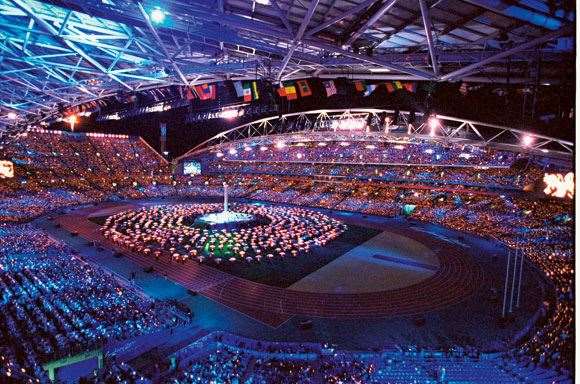The film industry may have suffered false starts with 3D, but sport’s gone all in, and will prove the weapon of choice for profit chasers.
The film industry may have suffered false starts with 3D, but sport’s gone all in, and will prove the weapon of choice for profit chasers.
 3D brought viewers Origin. It will bring them everything before too long.
3D brought viewers Origin. It will bring them everything before too long.Image: Getty Images
The clincher, it turned out, was realising just how much bigger and more imposing Israel Folau was than Billy Slater. It’s an easy idea to handle in the abstract, comparing rugby league’s – soon to be AFL’s – hulk on the wing to its sparkplug fullback. But your columnist really came to appreciate the difference while watching the much ballyhooed 3D broadcast of the first State of Origin game last month. Our generation of televisual sport spectators has grown familiar to the patterns and rhythms playing out over the flat screen – to watch the game in 3D was to see new space opened up on the field as if it were defying the laws of physics.
The move to 3D is on its way, and in the world of sports, it’s going to be as hard to stop as Folau coming straight at you. Forget the blue aliens of Avatar – sport is going to be the factor that drives 3D uptake in its early phase. The technology, while not perfect (expect complaints about the glasses to enter the pop culture lexicon soon), is compelling. Fans will be hard-pressed to deny that it’s a better way to watch the game, race or bout, the kind of next level up you can sense when you drop from watching HD to standard definition.
It’s worth noting how long and ongoing that transition has been, which should temper initial expectations for 3D. Many households have only just upgraded to HD, and have become savvier to the ways of the consumer tech product cycle (wait a few months, and get a better product at a cheaper price). And hardware is way ahead of content here – there may be many 3D sets sitting in homes without 3D broadcasts to watch (these sets can display conventional 2D TV).
Nevertheless, sport has gone all in. Compared to the film industry, which has had false starts with 3D in its past and has to work around an established, century-old practice in 2D, sport is moving very quickly. The experimenting around the edges – an Origin game here, a Socceroos friendly there – is giving way to large-scale efforts. Cable sports giant ESPN is currently launching a 3D-dedicated channel that will show 85 live events in the foreseeable future ... but will otherwise go dark when there’s nothing on. The network is so convinced this is the future that one of its executives admitted they were jumping into the unknown and muddling through. Broadcasters and electronics makers have a lot riding on the 3D bet, and it’s easy to foresee in the immediate future how sport will bear the load of every new gimmick and promotion. The business of sport will be about selling televisions.
It’s easy to forget that professional sport predates the tube, that it had a business model that functioned without it. This latest advent of 3D gets you thinking about the original core commerce of sport – people paying to go to games – and where it’s headed. The most common endorsement you’ll hear of 3D televised sport is it’s like being there, without having to leave your living room. On the night of Origin I, looking at the crowd exposed to day-long rain, the logic was pretty sound.
That sports are better to watch from an armchair rather than the stands is a threshold probably breached long ago, and 3D might further quieten the debate. Sports leagues still hold to the importance of attendance as a measure of their health, but in the grand scheme of things, the gate is growing relatively less important. A colleague mentioned that, at times during the Origin 3D broadcast, the background had a faintly unreal look at times, as if the play was going on in front of a green screen. Special effects-created fans can’t be too far away ...
– Jeff Centenera
Related Articles

Jack Hale on track to become fastest Aussie

Jack Hale on track to become fastest Aussie













